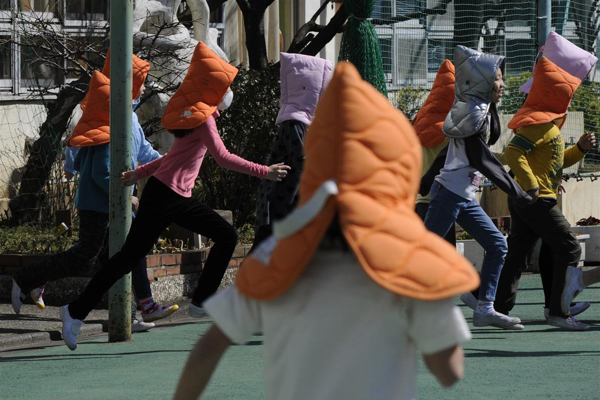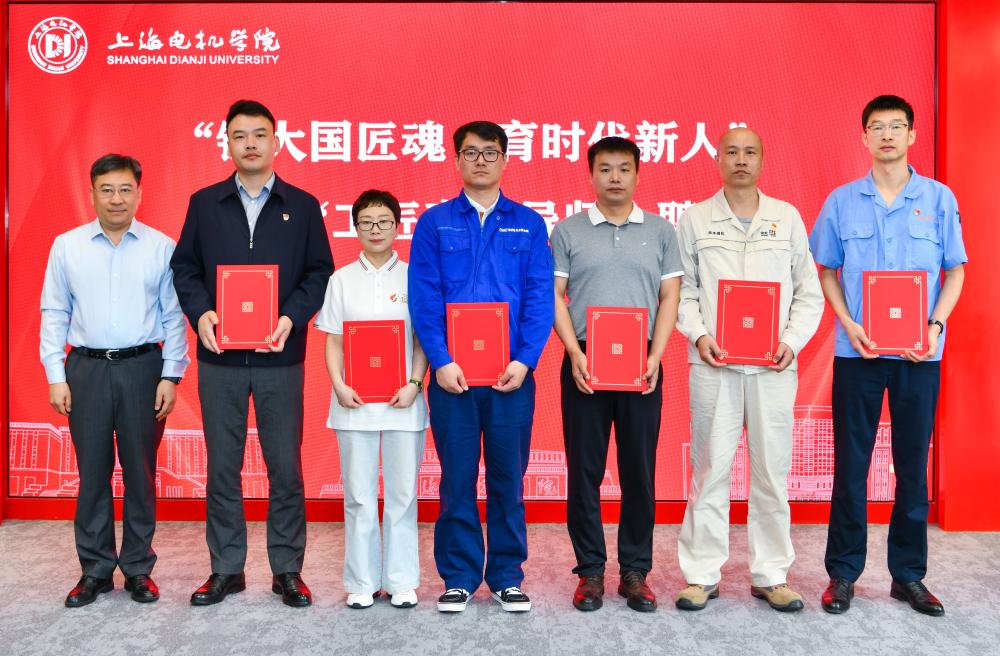She completed a "soaring" in the sense of garden architecture and "reproduced" 50 Ming Dynasty gardens with hand painting
The peak of ancient Chinese gardens dates back to the Ming Dynasty. The Ming Dynasty gardens were brilliant and colorful, but unfortunately, we can no longer see their true appearance today. Fortunately, ancient people depicted many scenic spots in gardens with words, and although the gardens have passed away, the "Garden Record" still exists.
Professor Wang Lifeng from the School of Architecture at Tsinghua University has given us a new starting point for our imagination of the appearance of Ming Dynasty gardens. She used prose like writing and elegant hand drawings to "recreate" 50 gardens of 23 Ming Dynasty gardens. Following the book "Garden Scenery: Fifty Wonderful Sceneries of the Ming Dynasty", we step into the beautiful garden scenery, gazing at the distant mountains and clouds, perching under the ancient pine forest, listening to the sound of warblers and water, and admiring the bright moon in the mountains.
Appreciating the beauty of traditional architecture is like the migration of birds. After resting here, one can soar further away.
"Garden Scenery: Fifty Wonderful Sceneries of the Ming Dynasty" by Wang Lifeng at Shanghai Sanlian Bookstore
Walking into the mountains and wilderness
Shangshu Fang: Today, you have described the Ming Dynasty gardens that we cannot see one by one. Is the only source of information available only from ancient books?
Wang Lifeng: Indeed, it's quite similar. The only Chinese classical gardens we can see are the remains from the Qing Dynasty onwards. Most people's impression of Chinese classical gardens remains in the style of Qing Dynasty gardens. This limits people's understanding of classical Chinese gardens. The academic research on ancient Chinese gardens is also influenced by the limitations of physical materials, which affects viewpoints, analysis, and discourse. This is inevitable. There is a major discontinuity in ancient gardens, and it is difficult for us to understand the diverse design features of previous gardens. A very small number of Ming Dynasty garden sites still exist, but they have undergone constant changes for hundreds of years and have basically lost their appearance and temperament at that time.
The achievements of Ming Dynasty gardens were brilliant. The gardens created in the mountains, rivers, and land were once vibrant, but they quickly disappeared into the smoke of history. Fortunately, ancient literati diligently and passionately wrote about many gardens in writing. Although the garden has passed away, the article remains. The unique and beautiful scenery and charming designs in the Ming Dynasty Garden Chronicles deeply touched my heart. Therefore, we have "reproduced" a large number of scenes and appearances of excellent Ming Dynasty gardens through hand drawing and narration, just like entering the mountains and fields of the Ming Dynasty Garden Chronicles to excavate and harvest, holding various exotic flowers and fruits for people to appreciate.
Going to the study: Those beautiful words make people yearn for them. There is a garden record that reads: "Walking through the Qushui River and entering the cave, the cave can accommodate twenty generations... winding up from the cave, with hanging steps and winding paths, and uneven stacks. The 'Biyi Hall' is viewed from above, and the highest point is like the 'Jicuigang'. The peaks are steep and vertical, and the shadow falls on half of the 'Lu Xiang Pool'. The wind generates microwaves, and the lotus flowers sway in the green sky."

Wang Lifeng: The garden described in this passage is located in Shanghai, which is the Ming Dynasty Luxiang Garden. There used to be a large-scale stacked stone mountain in the park, with spring water on the back of the mountain. The water flowed through the rocks and converged into a "dew fragrance pool" in front of the mountain. In private gardens, a 10 acre water surface is considered a large pool. On the long bridge over the pond, the red railings reflect the water. There is a Biyi Hall on the riverbank. There is a cave in the Dadie Stone Mountain. The stone cave can accommodate 20 people and is a very rare large cave. What's even more interesting is that there are rugged stairs along the stone walls inside the cave that can be climbed upwards, and the exit of the cave is at the top. The light in the cave also shone down from above. As soon as the tourist left the cave, they suddenly discovered that they were already at the top of Dashishan. The location is high and the view is broad. The Biyi Hall and Dachi, which were previously seen, are now viewed from a high altitude. The sky is reflected in the pool. The lotus flowers on the water seem to ripple in the blue sky.
In the late Ming Dynasty, the Lu Xiang Garden experienced war and was destroyed. By the early Qing Dynasty, there were only two or three old stones and a few shallow pools; In the 16th year of the Qing Dynasty's Daoguang reign, Xu Weiren purchased and renovated this garden, giving it a glimpse of its former landscape. During the Opium War, the garden was used for storing gunpowder. One day, the gunpowder depot exploded and the garden was completely destroyed. So it is really difficult for gardens to survive. Not only can we not see the Lu Xiang Garden of the Ming Dynasty now, but even in the early Qing Dynasty, we cannot see its best appearance during the Ming Dynasty. Fortunately, there is a vivid garden record called "Lu Xiang Garden Record" that has survived to this day, allowing us to appreciate it in detail.
The Ming Dynasty Lu Xiang Yuan Stone Cave repainted by Wang Lifeng
Shangshu Fang: It seems that the text in Yuanji is a unique compensation.
Wang Lifeng: Yes. In the literary world of the Ming Dynasty, Yuanji was relatively prosperous. The 2005 edition of "Selected Images and Texts of Chinese Historical Gardens" includes 153 Ming Dynasty garden notes. The garden notes used in my book have been carefully selected, and the description of the garden environment is precise and vivid, revealing the feelings of travelers and also depicting the grandeur of the garden. My experience is that there were some ancient literati who not only had a high literary level, but also had unique artistic talents and a unique and sensitive ability to perceive scenery and spatial beauty. At a certain moment, they were moved by the landscape they were in and distilled this captured feeling into vivid words. The information they convey is actually difficult to obtain by studying physical gardens.
Why was "Gaofeng" in the Ming Dynasty
Shangshu Fang: Why do you explain that Dai Garden is a peak in the history of Chinese gardens? Why didn't this peak appear in the Tang or Song dynasties?
Wang Lifeng: I will briefly summarize the historical characteristics of ancient Chinese landscape construction as Tang Dynasty landscapes, Song Dynasty landscapes, Ming Dynasty gardens, and Qing Dynasty gardens. The so-called "garden" is a type of landscape construction that is small in scale, limited in land use, with more artificial landscaping, closely related to human habitation, and often close to the city.
Our ancient landscape construction was first carried out in large mountains and forests, later moved towards Zhongshan and small mountains, approached the outskirts of towns, followed by hills, rivers, and ponds towards the outskirts of towns, and finally concentrated in the city.

During this process of change, the scale of the landscape ranges from large to small, and the land used for construction gradually becomes smaller and more refined. The pattern tends to be dense, and eventually evolves into a small landscape area. I think what is small enough for a family to be controllable becomes a "garden". Compared to large-scale landscapes or public landscapes, gardens have clever and varied techniques in their creation, and the temperament of the landscape is gentle and delicate.
Wang Lifeng redraws the entrance road to Yanshan Garden
Shangshu Fang: In this way, compared to the large-scale gardens of the Tang and Song dynasties, the scale of Ming dynasty gardens is smaller.
Wang Lifeng: Although the landscape features of the Tang and Song dynasties were represented by mountains, rivers, and scenery, there were also gardens in cities, mostly owned by high-ranking officials, nobles, and wealthy individuals, with a large scale used for socializing, banquets, and festive gatherings. There are relatively few recorded small-scale literary gardens.
In the mid to late Ming Dynasty, the accumulation of social wealth was abundant, the imperial ban on gardening was relaxed, and cities were bustling and dense. This was the heyday of mesoscale to small-scale gardening. The development of gardens is like a period of plant jointing and expansion. At that time, the gardens inherited the spirit of the Song Dynasty scenery and followed the Qing Dynasty gardens. They pursued a natural temperament in small and medium-sized environments and were very creative. Some Ming Dynasty gardens have a small area, but they are still free and unrestrained, full of creativity.
Going to the study: This is very similar to the views of Mr. Zhou Weiquan, a renowned historian of the old garden.
Wang Lifeng: Yes, Mr. Zhou Weiquan classified the period from the Two Song Dynasty to the late Ming and early Qing dynasties as the early stage of the maturity of Chinese classical gardens, and the period from the middle to the late Qing dynasty as the late stage of the maturity of Chinese classical gardens in his "History of Chinese Classical Gardens". He believes that in the early stage of maturity, the development of gardens has sublimated from its prime to a fully mature state rich in creative and enterprising spirit. In the later stage of maturity, on the one hand, it has achieved the highest level of achievement, and on the other hand, it has gradually become tedious and rigid, losing to some extent the positive and innovative spirit of the previous period. I strongly agree with Mr. Zhou Weiquan's viewpoint.
Shangshu Fang: You pointed out a viewpoint at the beginning of the book - Chinese gardens regard mountains as the focus of the garden environment, why are mountains so important to Chinese people?
Wang Lifeng: During the process of studying the landscape of Ming Dynasty gardens, I suddenly had this question: Why do Chinese gardens have mountains? No one has asked before. This is significantly different from other garden traditions in the world. European classical gardens are front gardens adorned with lush plants, sculptures, and springs, while Islamic gardens can be said to be exquisite spring gardens, often inner gardens. Chinese gardens must have mountains, which is a significant difference from the garden traditions of other civilizations.

In the past, many studies on the mountains in gardens have focused on the technique, form, materials, and the style of the garden owner, and people seem to take it for granted that there are mountains.
From this question, it can be seen that Chinese gardens originated in the mountains and have always retained the genes of mountain and forest gardens. Wherever people live, they take the garden with them, as if accompanying the mountains and forests.
Specifically, when it comes to using mountains for landscaping, there are three purposes: first, to observe; second, to travel; and third, to reside. Mountain observation refers to the shape, state, and momentum of the mountain; There are two pleasures in mountain tourism: one is to explore the depths and mysteries of the mountains, and the other is to climb high and gaze into the distance. Mountaineering is a combination of "sightseeing" and "sightseeing", which is a form of observation during sports and offers various pleasing experiences; And mountain dwelling can be said to be the ideal residence of ancient Chinese literati. The long poem "Shan Ju Fu" by Xie Lingyun, a landscape poet from the Southern Dynasty, praised the various beauties of Shan Ju and had a great influence on later literati. The architecture of mountain dwellings is sometimes luxurious, while others are simple. The ancients believed that this was not important. What was important was that people's daily lives and movements should be integrated into the beauty of mountain light and cloud shadows. Reading, writing poetry, playing the piano, painting, practicing, and meeting friends all carried with them the joy of beauty. Mountain dwelling allows one to enjoy this isolated detachment and the tranquility of the mountains, living in the endless richness and changes of nature.
Poetic Garden Scenery
Opening up new horizons for landscape research
Going to the study: Transforming abstract text into concrete drawings, you not only need to understand the ancient concepts of heaven, earth, and human beings, but also need to hand draw various details, which is too difficult!
Wang Lifeng: Indeed, the distance from text to images is not small, and it is a difficult and time-consuming task. After all, ancient Chinese characters were concise, and there were too many breakpoints and blind spots in the garden. I am a person with strong spatial imagination, but my drawing ability is far inferior to that of someone who is good at drawing. Reading text makes me imagine the scene, but when I finish writing, the space in my imagination becomes unpredictable, and the details are difficult to determine. I can only chew on the context repeatedly to further understand the structure of the garden, while drawing sketches repeatedly with my hands. Gradually, the scene in my mind becomes clearer and fuller, and the distance and size of the scene also become more accurate. At this point, it can be drawn more accurately. As for judging the scale of space and the organization of complex patterns, it depends on the accumulation of architecture majors. My experience in architecture and landscape design has helped me to analyze many situations during this process, so although the final draft is an intent diagram and the expression is also quite expressive, it is basically feasible in engineering.
I have friends who are good at drawing, but I cannot ask for help from others. Because the scenes generated by ancient texts are imagined in my mind, they can only be drawn from my pen. Especially for some difficult cases, they need to be repeated multiple times, and the various relationships revealed from the clues in the text need to be connected reasonably one by one. Once drawn, there will be a sense of achievement.
Going to the study: Transforming ancient texts into images and descriptions that modern people enjoy, this transformation is truly beautiful.

Wang Lifeng: From ancient texts to images, this transformation seems to cross a big river. Our imagination of the appearance of Ming Dynasty gardens has a foothold in painting, which allows us to move from abstract and ambiguous understanding to concrete, clear and stable understanding of the scene. Like the migration of birds, only after resting here can they soar further away.
Shangshu: What is "soaring" in the sense of garden architecture?
Wang Lifeng: Our "soaring" is the analysis of architecture, and the method used is "form momentum analysis". "Form" refers to the form of all material parts in the garden, including the original natural conditions and key points of design and creation; "Shi" refers to the landscape effect perceived by people guided by "form", which means "there are things and I"; And "analysis" needs to establish a relationship between the means of creating a garden environment and the visual effects it achieves, helping us learn from the experience of Ming Dynasty garden environment creation.
Shangshu Fang: You have opened up a new era for the current discipline of landscape architecture in this kind of research.
Wang Lifeng: The goal of this study is to "open up new horizons" for modern garden architecture. I have always hoped to see new materials and gain new perspectives. Senior scholars and masters have conducted years of research on physical gardens in the Qing Dynasty, laying a solid foundation. But our generation clearly needs to research more new achievements to serve modern large-scale cities, architecture, and landscapes. The ancient Chinese landscape is rich in resources, and in-depth study of it can open up new horizons for us.
Shangshu: How to understand "opening up new horizons"?
Wang Lifeng: First of all, it's "opening". I want to open up the "information package" of China's more ancient garden art; Secondly, I want to broaden my horizons and appreciate the appearance of Ming Dynasty garden art creation; Furthermore, it is "imagination" that breaks through old fixed understandings and stimulates new artistic imagination.
The transformation from ancient texts to images seems to cross a large river
Searching for the Shadow of Classic Gardens

Shangshu Fang: Is there a garden that leaves a deep impression on you, from which you can see the shadow of Ming Dynasty gardens?
Wang Lifeng: When I was young, I walked through famous mountains, rivers, and many gardens. At night, I stayed in unique temples in the mountains, and my heart was filled with various mountain and forest scenes. For studying architecture, it is truly a wonderful and endless artistic supplement.
It would be great if there could be a general label for Ming Dynasty gardens, which could help us quickly understand what Ming Dynasty gardens looked like. However, from my research, it can be seen that there were significant differences in Ming Dynasty gardens, and each garden had a completely different artistic style. The individual characteristics of the case were very obvious. For example, in the Ming Dynasty in Taicang, Suzhou, the brothers Wang Shizhen and Wang Shimao each built a garden, which was only a few hundred meters apart. The Yan Mountain Garden, built by Wang Shizhen, was huge and magnificent, and gained widespread fame in the Ming Dynasty, being promoted as a famous garden in Jiangnan during the Ming Dynasty; After Wang Shimao built the Danpu, he reminded the "mountain master" not to make it look like a Yan Mountain Garden, even if it's a little bit like it. The construction technique of Danpu is indeed unique and elegant, with a unique and elegant garden interest, which has become a representative case of Ming Dynasty gardens.
The creative power during the peak period of garden development was strong, which may be the overall appearance of the Ming Dynasty. Our research places particular emphasis on the unique characteristics of each park. When it comes to existing gardens, perhaps the classic shadows can be best seen in the gardens of Jichang, Liuyuan, and Humble Administrator.
Shangshu: I can't wait to hear you elaborate on it.
Wang Lifeng: Jichang Garden is located in Huishan, Wuxi. This excellent garden has been preserved to this day and can be considered a valuable asset.
This garden was built by Qin Jin during the Jiajing period of the Ming Dynasty and has been passed down by the Qin family for a long time. There was a successful construction adjustment during the late Ming and early Qing dynasties. Going forward, there were more changes in other parts, while the mountain forest and large pond areas remained relatively stable. Since the construction and adjustment, Jichang Garden has won the favor of the Holy Family of the Kangxi and Qianlong emperors of the Qing Dynasty, becoming a necessary residence for Kangxi and Qianlong in Jiangnan. Qianlong visited many gardens in Jiangnan, but he was particularly fond of Jichang Garden. Emperor Qianlong built the Summer Palace and specially imitated the Jichang Garden in the garden for constant sightseeing.
What is the construction code hidden in Jichang Garden? I finally found a breakthrough from the elongated shape of its pond, and gained an interesting new understanding, which I applied to analyze two famous gardens in the Qing Dynasty - the Liuyuan and the Humble Administrator's Garden. The analysis of the two gardens in the Qing Dynasty not only verified this understanding, but also provided valuable insights into the reasons for their excellence. Jichang Garden, Liuyuan Garden, and Humble Administrator's Garden are some of the experiences of these three high-level gardens, which can break away from the specific form of physical objects and become a design pattern and value system, providing excellent inspiration for future garden design.
I wrote this new understanding as the eighth "monograph" and placed it at the end of the first book in the Garden series.

Xiangshan Tea House designed by Wang Lifeng
Shangshu Fang: The building you designed is very beautiful, is it related to studying ancient gardens?
Wang Lifeng: When I was young, traveling through mountains and rivers and experiencing gardens was truly beneficial. The scenery of ancient Chinese gardens has always been in my heart.
Later, I had the opportunity to design a pure landscape project. In order to celebrate the 90th anniversary of Tsinghua University, the school planned to transform a very dilapidated ruins on campus, the "North Campus," into a green landscape. The former "North Campus" was one of the earliest architectural complexes of the school, which was built in 1911 for foreign teachers to live in. Later, Liang Qichao, Ye Qisun, Zhu Ziqing, and others successively lived here. More than 80 years later, the "North Campus" has almost become the geometric center of the new campus of Tsinghua University. Although it is dilapidated, it has valuable historical endowments. Moreover, the northwest suburbs of Beijing have vast and beautiful terrain, with remnants of soil mounds and several ancient trees standing among the miscellaneous trees. I want to utilize these endowments and use unusual techniques to create a unique landscape.
I connected the lonely small mounds into winding "distant mountains" and commanded the bulldozers on site, creating a soft shape. I lightly covered the green lawn on the distant mountains. I walked along the valley on site, having workers carry lime buckets and follow behind to lay lines, "drawing" the trend of the path. I looked around under the trees in the small square, and asked the workers to place the tables and chairs in those good positions. I sat there carefully to experience and position myself. A seat leaning against a pillar is suitable for socializing and chatting, as well as for gazing at the scenery and daydreaming. There is also a small square under the trees along the river on the east side, which is particularly suitable for outdoor learning. This reminds me of a great place in the Ming Dynasty Garden Chronicles, called "Forgetting the Moment", which in my understanding is "a place to admire the scenery and daydream.". After its completion, the garden became very popular. It has been more than 20 years and now it is becoming more and more beautiful.
Shangshu Fang: Is it the later Lover Slope?
Wang Lifeng: Yes. This name is very youthful. It is not an official name, but a name passed down among students. A master architect once said that if residential buildings are meant for people to live in, then gardens are people's dreams. Dreams are always the most beautiful part of life. Can a life without dreams be beautiful?
Shangshu Fang: Did these designs be done before the Ming Dynasty garden landscape research?
Wang Lifeng: These designs were all before the study of the Ming Dynasty garden landscape. But I have been influenced by the landscape creation in the famous mountains and rivers of China, as well as the classical gardens I have experienced. Moreover, I have been studying landscape and architecture since I wrote my master's thesis, which has become the foundation and confidence of my design conception and creation, and is also in line with my subsequent landscape research. On the contrary, it is precisely because of my in-depth creative practice that my understanding of Ming Dynasty garden notes is more specific and profound.

The "Lover's Slope" after design and renovation
Creating landscapes that young people enjoy
Study Room: In 2015, a media reporter asked you to predict the future development direction of architectural design in China. At that time, you seemed a bit pessimistic. You said, "I don't know if domestic architectural design can move towards rationality." If you ask the same question again now, will your answer change?
Wang Lifeng: I was a bit worried back then. The construction of the buildings was too urgent, too fast, too large in scale, and I couldn't do very careful artistic creation. But over the years, I have seen more and more innovative works, and I feel relieved and optimistic. So I need to focus more on research and provide valuable materials for young designers.
During the period when the younger generation grows up, they have better conditions than us in all aspects, and they will definitely be more picky in aesthetics and art. It can be certain that the future society will be wealthier than it is now, and young people will not be satisfied with their current situation in art, which is inevitable. Architectural designers need to have active artistic imagination and create beautiful environmental scenes that are far more moving than they are now, including cities, rural areas, and mountains. Young designers in the future will definitely be eager to create. Undoubtedly, learning from outstanding achievements in various cultural systems abroad is a major trend, which is relatively easy and may also be superficial. Compared to this, learning from the great artistic achievements and philosophies of ancient China, in order to break existing thinking patterns and develop into artistic imagination, is a more meaningful and challenging direction. I just want to do some basic research of this kind first.
Going to the study: What kind of architecture and gardens will young people like in the future?
Wang Lifeng: I think that in the future, the landscape and architectural environment that young people will like should not only be limited to the beautiful urban greenery, waterfront greenways, parks of all sizes, but also not limited to many buildings, as well as large but uninteresting residential and public buildings. In my heart, I believe that a good and aesthetically pleasing spatial environment, whether it is a large scene or a small environment, should be surprising, admirable, and nostalgic. There, people's mood will become peaceful and beautiful, and even their mood and appearance will appear particularly beautiful. They will really want to share time with close people there, and can also enjoy it alone for a long time.
This requires a high level of artistic creativity and imagination to achieve. In the past, I was worried that young people would only be picky and unable to create, but now I feel that they have hope to achieve such innovation. I am full of expectations for the future.




